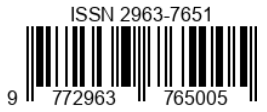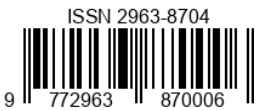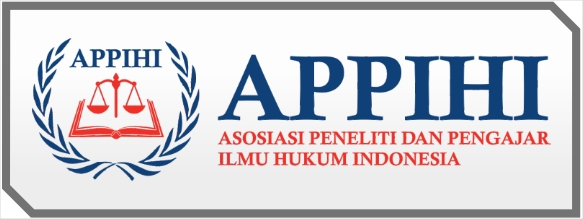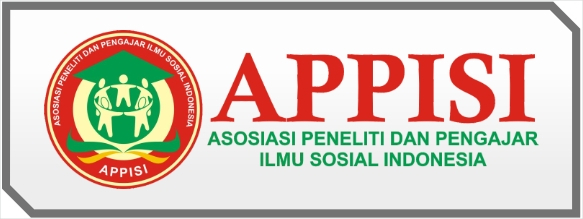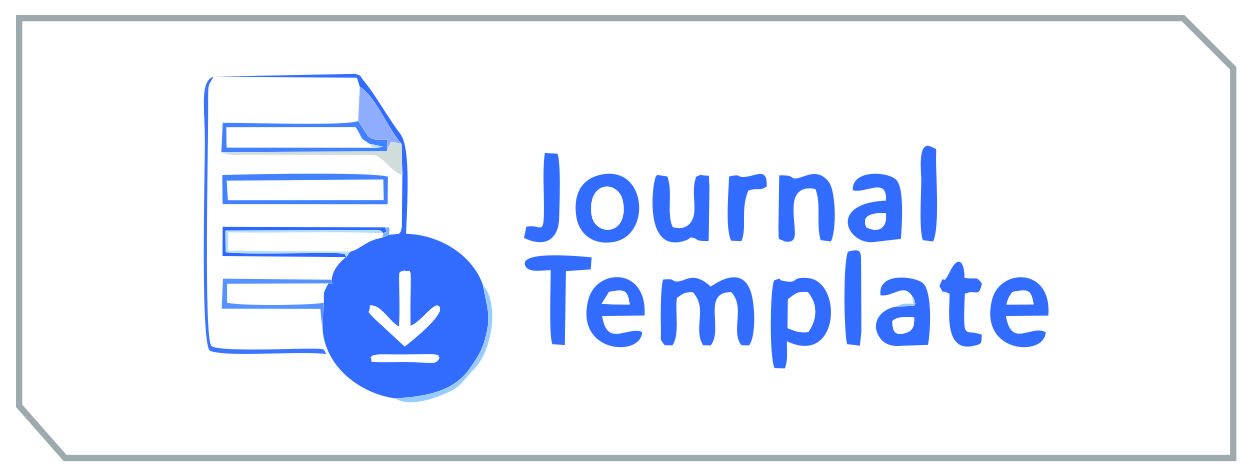MENGUBAH BUDAYA PENDIDIKAN HUKUM MENGGUNAKAN PEMBELAJARAN SIMULASI METAVERSE
DOI:
https://doi.org/10.55606/jhpis.v1i2.1532Keywords:
Pendidikan hukum, Pembelajaran Simulasi, MetaverseAbstract
Penelitian ini bertujuan untuk mengembangkan alat pembelajaran yang dapat digunakan untuk merevolusi sistem pendidikan tradisional dalam bidang hukum menggunakan pembelajaran simulasi metaverse. Pembelajaran berbasis simulasi melibatkan pembuatan skenario realistis dalam lingkungan yang aman dan terkendali untuk membantu mahasiswa dalam mengembangkan keterampilan dan pengetahuan yang dapat diterapkan pada situasi dunia nyata, terlebih lagi, lingkungan online yang terbentuk semenjak pandemi covid muncul membuat berbagai institusi pendidikan doipaksa untuk terus berevolusi dalam penggunaan platform digital yang semakin canggih. Penelitian ini menggunakan pendekatan sistematik dan holistik dan dievaluasi lebih lanjut untuk mengalisis dan memberikan saran perubahan pada kurikulum pendidikan tinggi dibidang ilmu hukum sehingga alat yang diusulkan dapat digunakan lebih luas lagi pada berbagai program studi. Hasil penelitian menunjukkan bahwa, terdapat peningkatan pembelajaran mahasiswa lintas kurikulum profesi khususnya bidang hukum terlebih lagi dimasa pandemi covid dengan memanfaatkan ruang virtual yang memiliki suasana dunia nyata, sehingga menjembatani bentuk pembelajaran antara program akademik dan pengembangan profesi berkelanjutan
Downloads
References
Lauber, B., Jünger, J., Möltner, A., & Hautz, W. E. (2016). Professional development of medical educators: A project-based approach to enhance education in a medical simulation center. Medical Teacher, 38(1), 78-84.
Alinier, G., Campbell, C., & Ali, P. A. (2015). A simulated patient approach to teaching clinical skills and professionalism to undergraduate physiotherapy students. Physical Therapy Reviews, 20(5-6), 366-374.
Thistlethwaite, J., Lockyer, L., Jorm, C., et al. (2017). Accreditation of simulation programs in Australia: A descriptive study. BMJ Simulation and Technology Enhanced Learning, 3(4), 138-143.
Lapkin, S., Levett-Jones, T., Gilligan, C., et al. (2015). A systematic review of the effectiveness of simulation debriefing in health professional education. Nurse Education Today, 35(1), e34-e41.
Diamond, J. S., Scharffs, B. K., & Winkler, R. C. (2021). Virtual Reality and Legal Ethics: Exploring the Link between Digital Technology and Ethical Decision Making. Journal of Legal Education, 71(3), 539-558.
Mc Cusker, R., & Purcell, J. (2016). “The law is a jealous mistress”: Reflections on the use of simulated law firm modules in law degree programs. The Law Teacher, 50(1), 93-105. doi: 10.1080/03069400.2015.1114889.
De Leo, G., Green, M., Westra, B. L., & Gino, R. (2021). Using a virtual hospital to promote clinical decision-making in undergraduate nursing students. Nurse Education Today, 101, 104936.
Eggert, S., & Friedland, S. (2015). Building Simulation Exercises to Teach Professionalism, Ethics, and Communication. In Global Legal Skills Conference Proceedings (Vol. 5, No. 1).
Glesner, R., & Heidt, E. J. (2017). Simulations in the Classroom and Beyond. In Global Legal Skills Conference Proceedings (Vol. 10, No. 1).
Kurth, J. (2020). Teaching Legal Writing with Simulations Online. In Global Legal Skills Conference Proceedings (Vol. 13, No. 1).
Hsieh, P. H., & Liao, H. C. (2019). Role-playing simulation as a method for improving social skills and empathy in humanities education. British Journal of Educational Technology, 50(6), 3281-3295.
Mayer, R. E., Stull, A., DeLeeuw, K., Almeroth, K., Bimber, B., Chun, D., & Kitsantas, A. (2015). Clickers in college classrooms: Fostering learning with questioning methods in large lecture classes. Contemporary educational psychology, 40, 89-96.
Umayahara, M., Umayahara, M. A., & Lopes, C. E. (2015). Simulacra as tools for teaching and learning mathematics. ZDM, 47(6), 1037-1046.
Yang, Y. T. C., Wu, W. C. V., & Tsai, C. C. (2018). Exploring the effects of a virtual reality-based simulation on student learning of computer programming. Journal of Educational Technology & Society, 21(1), 58-69.
Bhatia, A., Mills, A., & Hollins, B. (2020). Building leadership and decision-making skills through virtual simulations in business education. Journal of Education for Business, 95(9), 475-483.
Harvard Law School. (n.d.). Cyberlaw Clinic in the Metaverse. Retrieved April 9, 2023, from https://cyberlawclinic.law.harvard.edu/projects/cyberlaw-clinic-in-the-metaverse/Cantrell, M. A., Young, K. M., & Moore, J. A. (2020). Simulation-based learning in nursing education: A systematic review. Journal of Nursing Education and Practice, 10(10), 24-34.
Issenberg, S. B., McGaghie, W. C., Petrusa, E. R., Gordon, D. L., & Scalese, R. J. (2011). Features and uses of high-fidelity medical simulations that lead to effective learning: A BEME systematic review. Medical Teacher, 33(1), e29-e46.
Lopreiato, J. O., Sawyer, T., Northington, L., Pardue, J., & Kennedy, C. (2016). Simulation-based medical education in pediatrics. Academic Pediatrics, 16(3), 240-247.
Norman, G., Dore, K., & Grierson, L. (2012). The minimal relationship between simulation fidelity and transfer of learning. Medical Education, 46(7), 636-647.
Cantrell, M. A., Young, K. M., & Moore, J. A. (2020). Simulation-based learning in nursing education: A systematic review. Journal of Nursing Education and Practice, 10(10), 24-34.
Issenberg, S. B., McGaghie, W. C., Petrusa, E. R., Gordon, D. L., & Scalese, R. J. (2011). Features and uses of high-fidelity medical simulations that lead to effective learning: A BEME systematic review. Medical Teacher, 33(1), e29-e46.
Lopreiato, J. O., Sawyer, T., Northington, L., Pardue, J., & Kennedy, C. (2016). Simulation-based medical education in pediatrics. Academic Pediatrics, 16(3), 240-247.
Norman, G., Dore, K., & Grierson, L. (2012). The minimal relationship between simulation fidelity and transfer of learning. Medical Education, 46(7), 636-647.
Rogoff, B., Coppens, A. D., Alcalá, L., Aceves-Azuara, I., Ruvalcaba, O., López, A., & Dayton, A. (2016). Development through participation in cultural activity. New Directions for Child and Adolescent Development, 2016(154), 57-72.
Tsui, A. B., & Law, D. Y. K. (2017). Learning as boundary-crossing in school-university partnerships: A sociocultural perspective. The Asia-Pacific Education Researcher, 26(1-2), 75-84.
(References: Ministry of Education and Culture of the Republic of Indonesia. (2020). Indonesia's Education Statistics 2019/2020. Retrieved from https://publikasi.data.kemdikbud.go.id/uploadDir/isi___indonesia_s_education_statistics_2019_2020_1593446736.pdf)
Singh, P., & Reed, R. (2015). Professional learning in a changing world: Online learning and technology integration for teacher professional development. Journal of Digital Learning in Teacher Education, 31(1), 1-13.
Boud, D., & Molloy, E. (2013). Rethinking models of professional learning. In L. Darling-Hammond & J. Bransford (Eds.), Preparing Teachers for a Changing World: What Teachers Should Learn and Be Able to Do (pp. 297-324). John Wiley & Sons.
National Board for Professional Teaching Standards. (2022). Certification overview. https://www.nbpts.org/become-a-board-certified-teacher/certification-overview/
General Teaching Council for Scotland. (2022). Professional review and development. https://www.gtcs.org.uk/professional-update/professional-review-and-development.aspx
Liao, C.-C., & Chen, N.-S. (2017). Technology-enhanced problem-based learning: A systematic review. Educational Research Review, 22, 74-90. https://doi.org/10.1016/j.edurev.2017.09.003
Savery, J. R., & Duffy, T. M. (2015). Problem-based learning: An instructional model and its constructivist framework. In J. M. Spector, M. D. Merrill, J. Elen, & M. J. Bishop (Eds.), Handbook of research on educational communications and technology (pp. 485-506). Springer. https://doi.org/10.1007/978-1-4614-3185-5_31
Liao and Chen (2017) stated that technology-enhanced PBL (TE-PBL) can enhance student engagement, critical thinking, and problem-solving skills. They also noted that TE-PBL can provide opportunities for collaborative learning, as students can work together on projects and assignments using digital tools. The citation for this statement is:
Liao, Y., & Chen, N. S. (2017). Technology-enhanced problem-based learning: A systematic review. Interdisciplinary Journal of Problem-Based Learning, 11(2), 4.
Similarly, Savery and Duffy (2015) argued that the use of technology in PBL can shift the focus from teacher-centered to student-centered learning, enabling students to take an active role in their own learning process. The citation for this statement is:
Savery, J. R., & Duffy, T. M. (2015). Problem-based learning: An instructional model and its constructivist framework. In R. E. Mayer & P. A. Alexander (Eds.), Handbook of research on learning and instruction (pp. 345-370). Routledge.
Dabbagh, N., & Kitsantas, A. (2012). Personal learning environments, social media, and self-regulated learning: A natural formula for connecting formal and informal learning. The Internet and Higher Education, 15(1), 3-8.
McNaught, C., & Lam, P. (2010). Pedagogical design of a blended learning environment: Implications and recommendations for further development. Australasian Journal of Educational Technology, 26(3), 369-385.
Kim, J., Park, H., Lee, H., & Lim, H. (2018). Large-scale simulations in undergraduate physics education: exploring the learning effectiveness and the transferability to real world problem solving. Educational Technology Research and Development, 66(5), 1265-1281.
Ntuli, F., Ngcobo, M., & Mhlongo, M. (2020). Virtual laboratory for renewable energy: Development and assessment of a wind turbine simulator. Education and Information Technologies, 25(5), 3751-3771.
Zhang, H., Liu, H., & Cheng, J. (2021). The effectiveness of a virtual learning environment in a blended course: The case of an environmental sustainability course. Computers & Education, 160, 104031.
Chen, X., Huang, Y., & Xie, J. (2021). Personalized intelligent learning system based on artificial intelligence in the VLE environment. Journal of Educational Technology Development and Exchange, 14(1), 1-18.
Roussos, G., Charitos, D., & Vassilakis, C. (2021). The use of metaverse in education: A review of the literature. Journal of Educational Technology & Society, 24(1), 238-251.
Huang, J., Yang, W., & Chang, C. (2021). Metaverse for teaching computer science: Effects on student engagement, motivation, and learning outcomes. Interactive Learning Environments, 1-14.
Singh, S., Hussain, S., & Jayaswal, S. (2021). Metaverse for law education: Advantages, challenges and potential impact. Journal of Legal Technology Risk Management, 3(2), 85-96.
Zhao, Y., Wang, J., Lu, X., & Chen, X. (2021). Effects of simulated learning on cooperative learning skills and affective outcomes: An empirical study. Frontiers in Psychology, 12, 620362.
Fachrudin, A. (2021). Virtual Moot Court untuk Mahasiswa Hukum. Retrieved from https://www.hukumonline.com/berita/baca/hol192171/virtual-moot-court-untuk-mahasiswa-hukum/
Sari, N., Mutakin, M. F., & Wibowo, A. (2021). Penggunaan Virtual Courtroom Sebagai Media Pembelajaran Hukum Pidana Materi Persidangan. Jurnal Pendidikan Hukum Dan Hukum Pendidikan, 8(2), 221-228.
Widodo, A., Husni, A., & Latifah, E. (2021). Pengembangan Permainan Simulasi Hukum "Sila Keadilan" Untuk Meningkatkan Kemampuan Berpikir Kritis Mahasiswa. Jurnal Pendidikan Hukum Dan Hukum Pendidikan, 8(1), 90-99.



